How to Write Cipd Assignment | Level 3,5 & 7
Writing a CIPD (Chartered Institute of Personnel and Development) assignment means explaining the topic in a detailed, structured, and easy-to-understand. before doing Cipd assignment you need to break the topic into many Steps clear sections, use real examples and explain key terms and theories in simple language. This guide will help you through each step to help you write Quality CIPD assignment that Achive academic standards which one is very easy steps to follow any Student. if you are writing on employee engagement, talent management, or HR analytics, these Steps will help you cover all the important points clear, logic, and information.
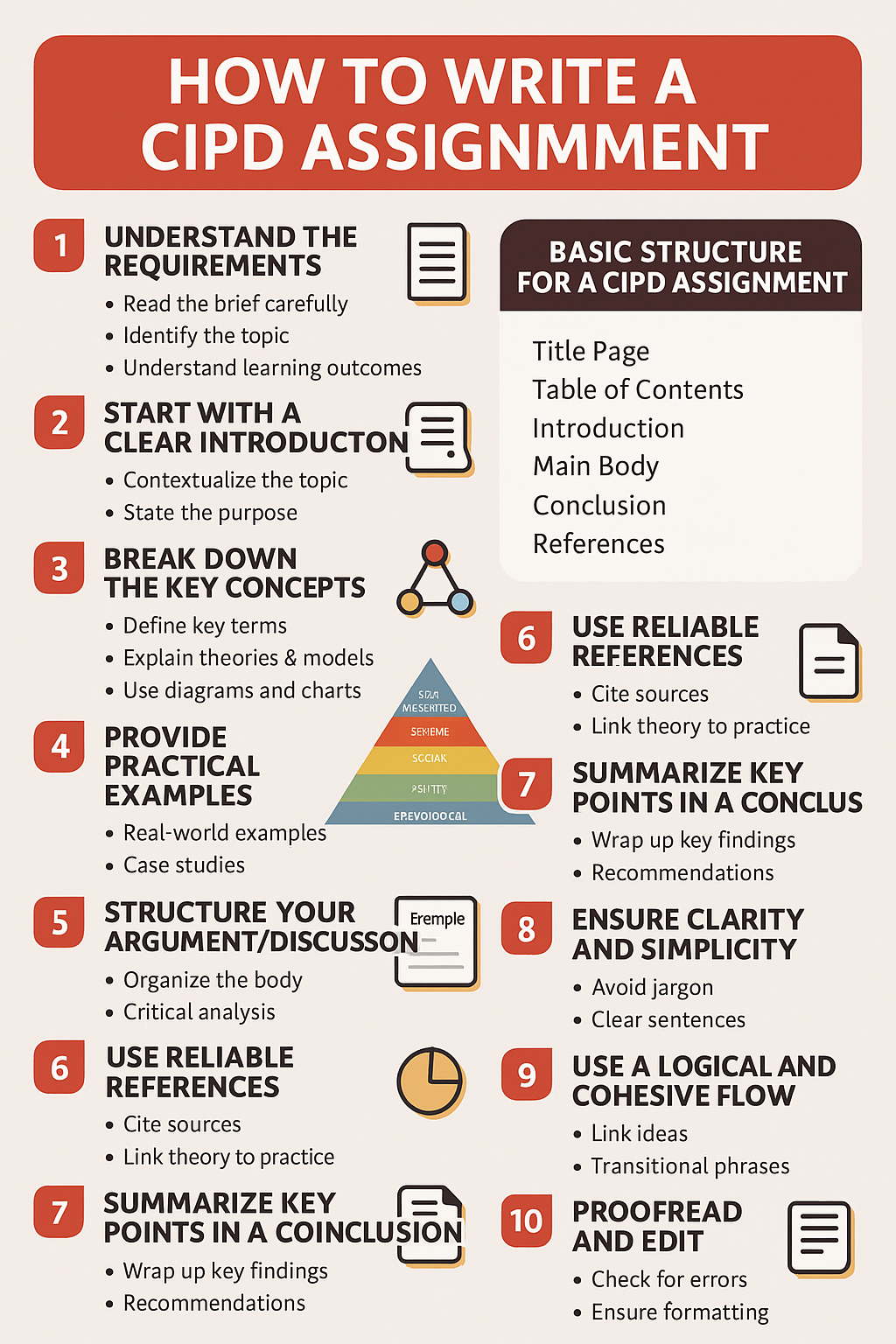
1. Understand the Requirements
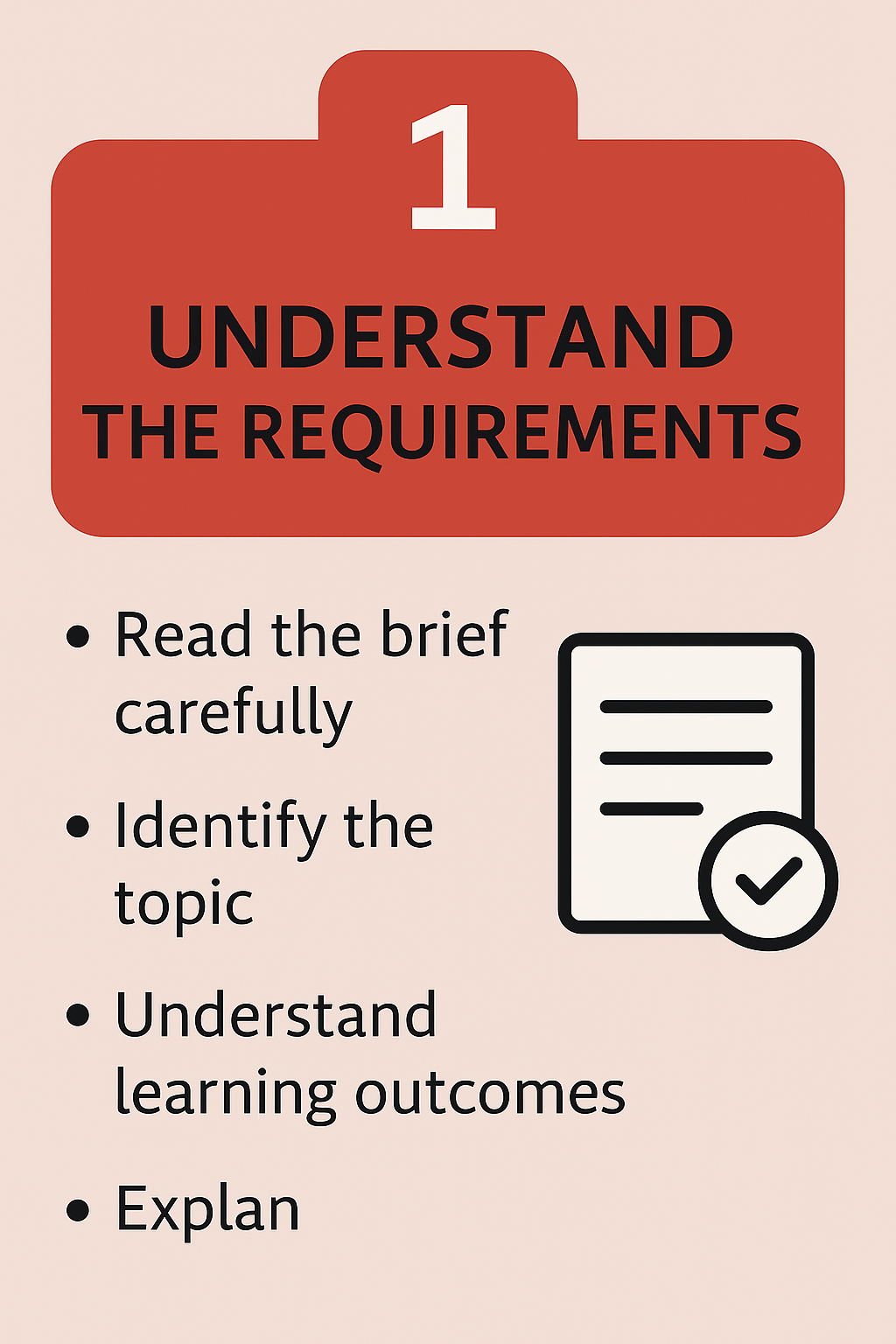
Read the Brief Carefully: Understand the assignment question, specific guidelines and assessment criteria. Ensure that you have understnd assignment each aspect what ever unversity standered required.
Identify the Topic:you need to read the topics again and again until clear., "Talent Management," "Employee Engagement," "HR Analytics," etc.
Understand Learning Outcomes:CIPD assignments are based on specific learning outcomes, which clearly explain what knowledge or skills you’re expected to demonstrate. To score well, your answers should directly address these outcomes and show that you fully understand and can apply them in real-world HR or L&D contexts.
2. Start with a Clear Introduction
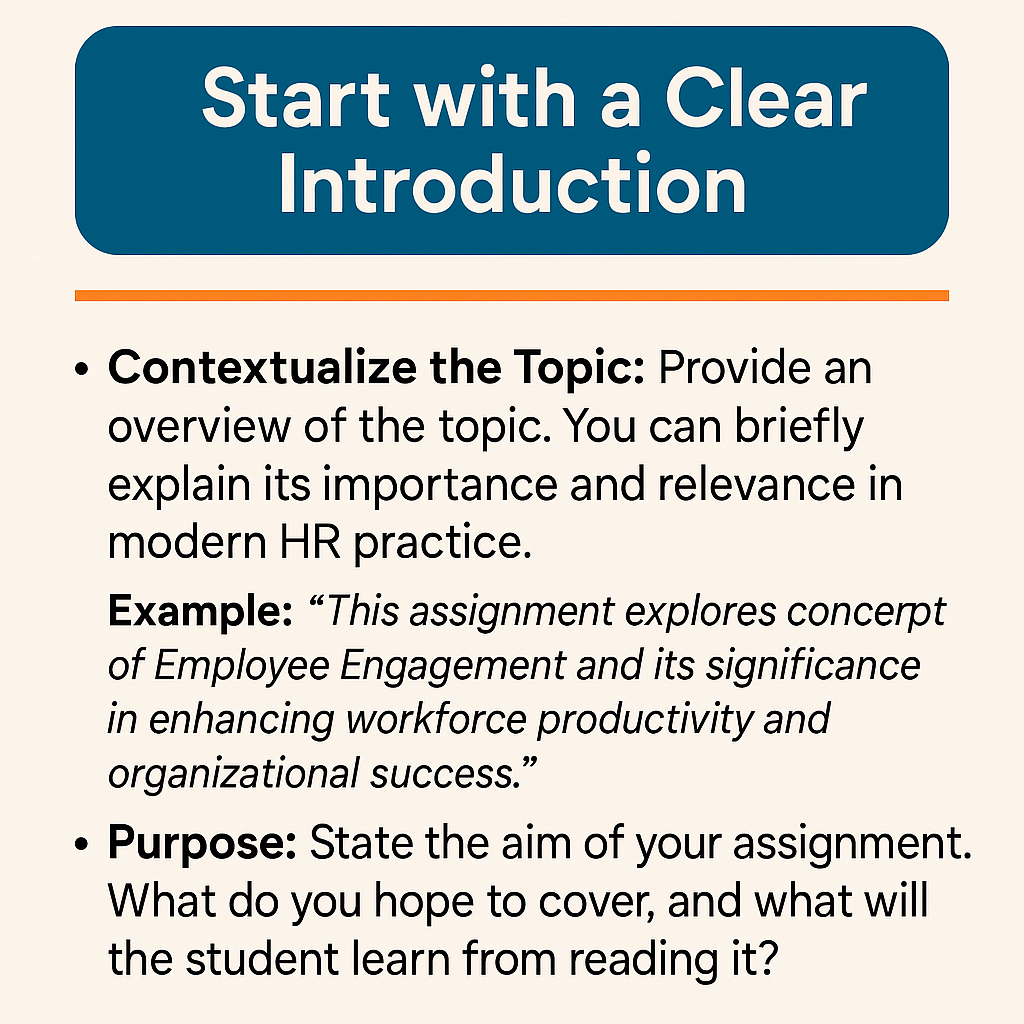
Contextualize the Topic:write an overview of the topic. You Should briefly explain the importance and relevance in topics (modern HR practice).
Example:“This assignment explores the concept of Employee Engagement and its significance in enhancing workforce productivity and organizational success.”
Purpose:Directly you should focus on the aim of your assignment. What do you hope to cover, and what will the Student learn from reading it.
CIPD L3 C0043376200 TEMPLATE
Assignment
6 Pages
Sources: 06
3. Break Down the Key Concepts

Define Key Terms:Make Ensure all terms related to the topic. For example, in a "Talent Management" assignment, you might define what "talent," "talent pool," and "succession planning" mean.
Example:"Talent management refers to the process of attracting, developing, retaining, and optimizing employees who can contribute to an organization’s goals."
Explain Theories & Models:Integrate theories and models relevant to the subject matter. Use these to frame your analysis
For example, if discussing "Employee Motivation," you could explain Herzberg’s Two-Factor Theory, Maslow’s Hierarchy of Needs, etc.
Use Diagrams and Charts:Visual aids can make concepts clearer. A simple chart, flowchart, or diagram can break down complex ideas.
Example:Include a diagram of Maslow's hierarchy to show how different levels of motivation impact employee behavior.
4. Provide Practical Examples

Real-World Examples:Relate the theory to real-life scenarios to make it easier to understand. Provide examples from different industries, organizations, or case studies.
For example, “Company X implemented a talent management system which resulted in a 30% increase in employee retention over two years.”
Case Studies:If applicable, refer to case studies or HR best practices from well-known organizations.
5. Structure Your Argument/Discussion

Organize the Body: Break the main body into sections, each addressing a sub-topic or part of the assignment. This helps in maintaining flow and clarity.
Example structure:
Section 1: Overview of Employee Engagement
Section 2:Theories of Employee Engagement
Section 3:Practical Application of Engagement Strategies
Section 4:Challenges and Barriers to Engagement
Critical Analysis:Don’t just describe the topic—critically analyze it. Discuss strengths, weaknesses, and real-life implications.
For instance, when discussing recruitment strategies, you might mention the pros and cons of different recruitment methods (internal vs. external recruitment).
Business culture and change in context
Assignment
17 Pages
Sources: 14
6. Use Reliable References
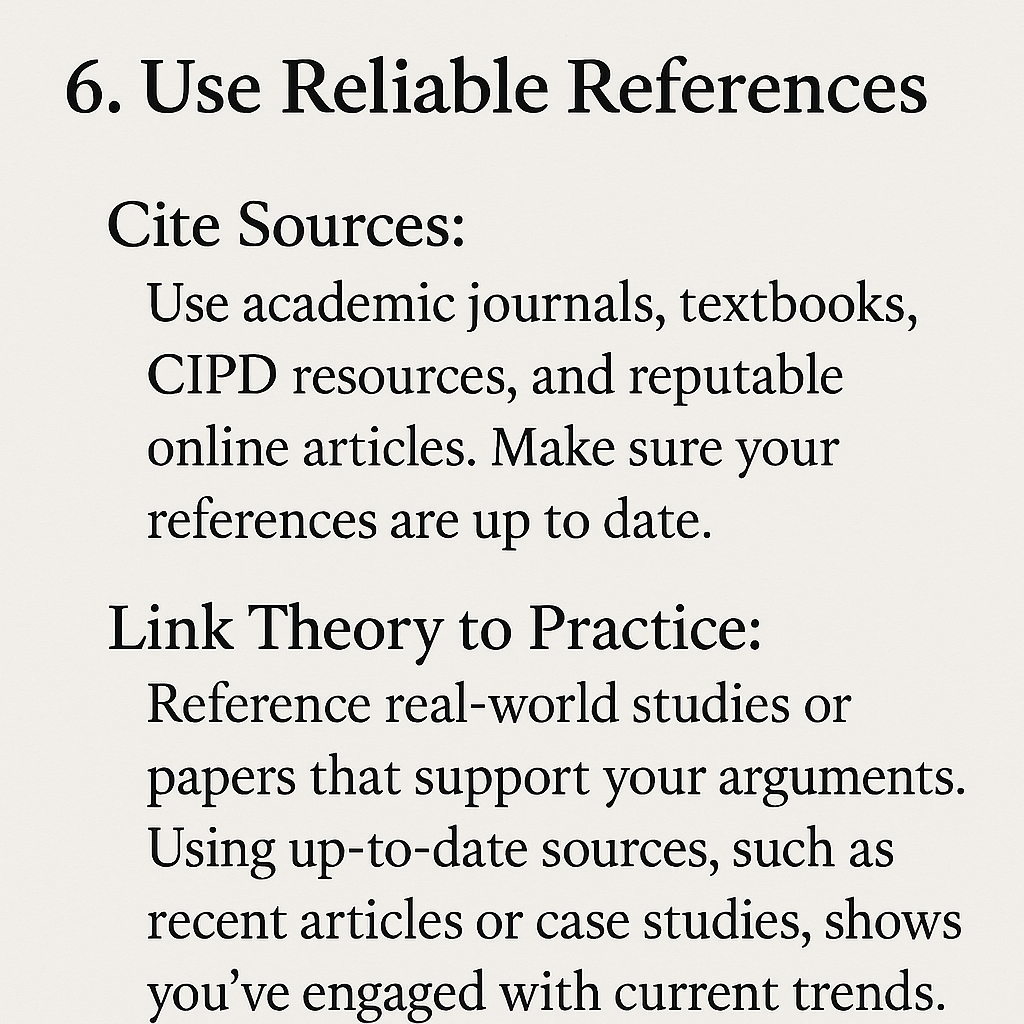
Improved Grades and Academic Performance
Cite Sources:Use academic journals, textbooks, CIPD resources, and reputable online articles. Make sure your references are up to date.
Link Theory to Practice:Reference real-world studies or papers that support your arguments. Using up-to-date sources, such as recent articles or case studies, shows you’ve engaged with current trends.
Example: “According to CIPD (2023), employee engagement is directly linked to lower turnover rates in organizations…”
7. Summarize Key Points in a Conclusion
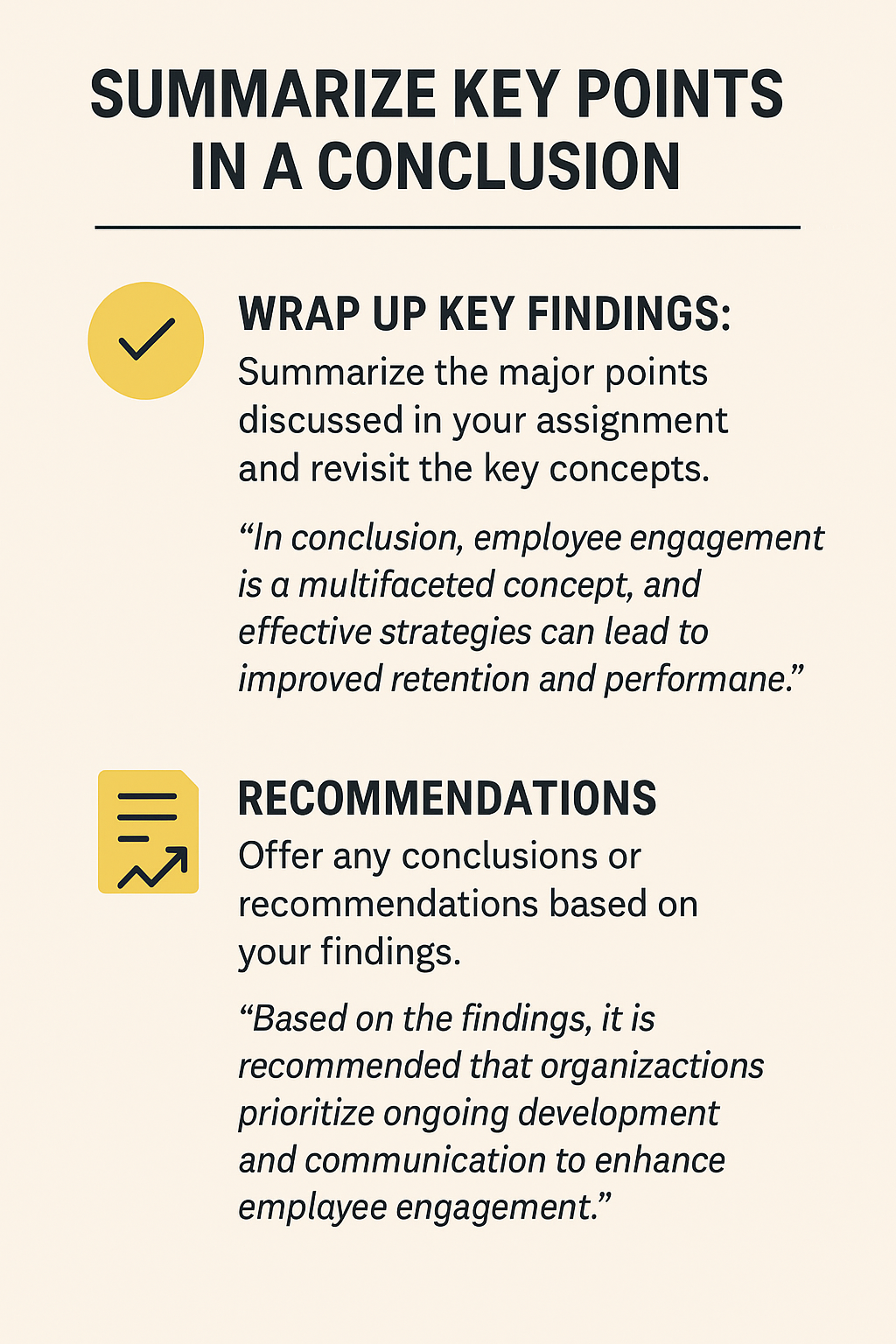
Wrap Up Key Findings:Summarize the major points discussed in your assignment and revisit the key concepts. What have you learned?
Example:"In conclusion, employee engagement is a multifaceted concept, and effective strategies can lead to improved retention and performance."
Recommendations:Offer any conclusions or recommendations based on your findings.
Example:“Based on the findings it is recommended that organizations prioritize ongoing development and communication to enhance employee engagement.”
8. Focus on Clear and Easy Language
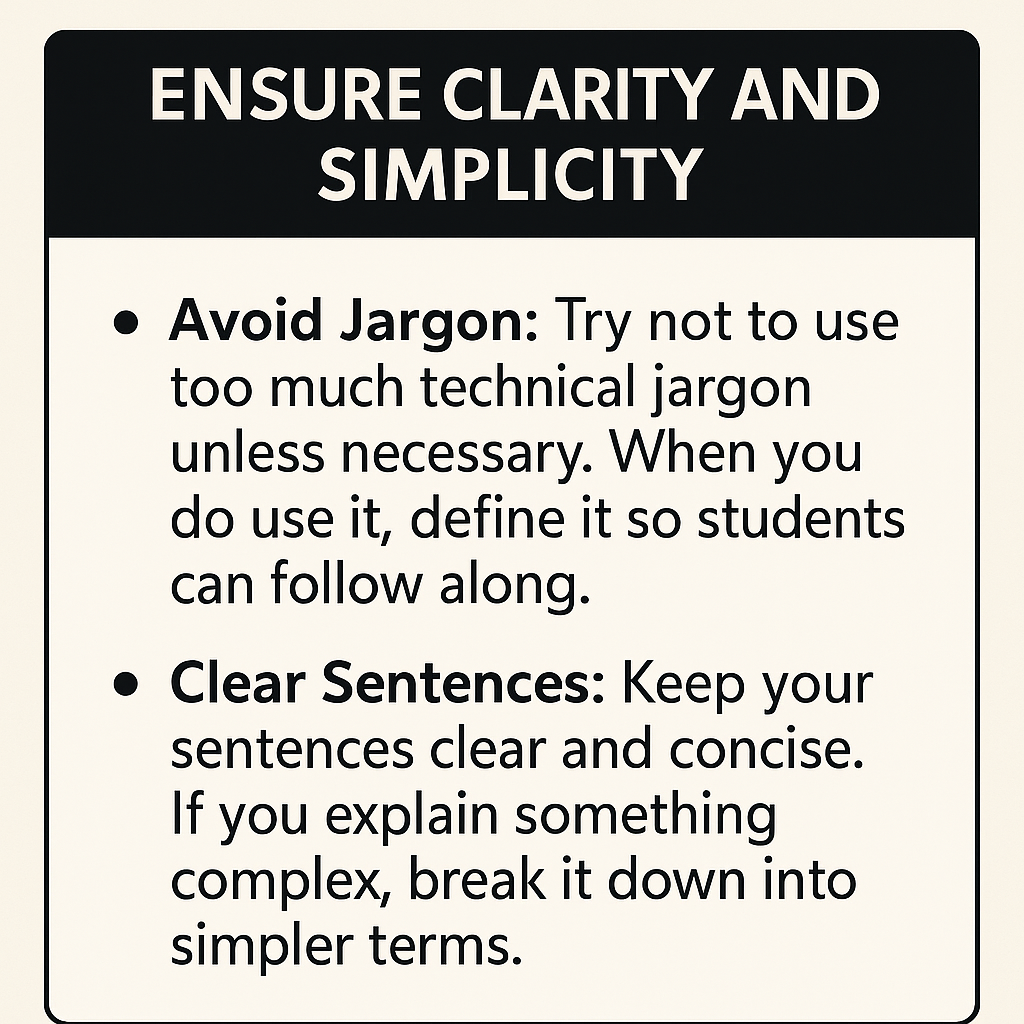
Avoid Jargon:Try to keep your language simple. When using complex sentences give a short explanation.
Clear Sentences:Use short and simple sentences. For complex ideas, explain them in easy to understand.
9. Use a Logical and Cohesive Flow
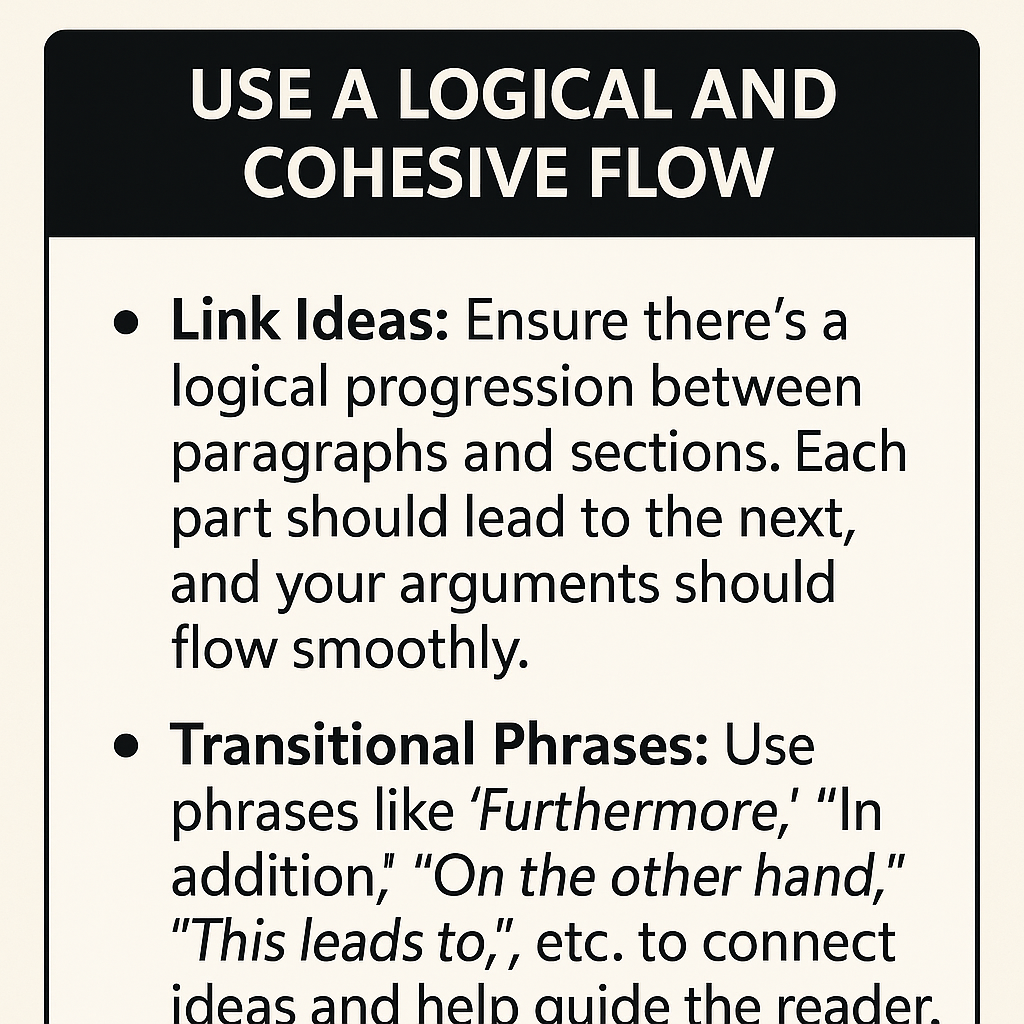
Link Ideas:Ensure there’s a logical progression between paragraphs and sections. Each part should lead to the next and your arguments should flow smoothly.
Transitional Phrases:Use terms like “Moreover,” “Also,” “However,” or “As a result” to join ideas and help the reader follow your points.
10. Proofread and Edit
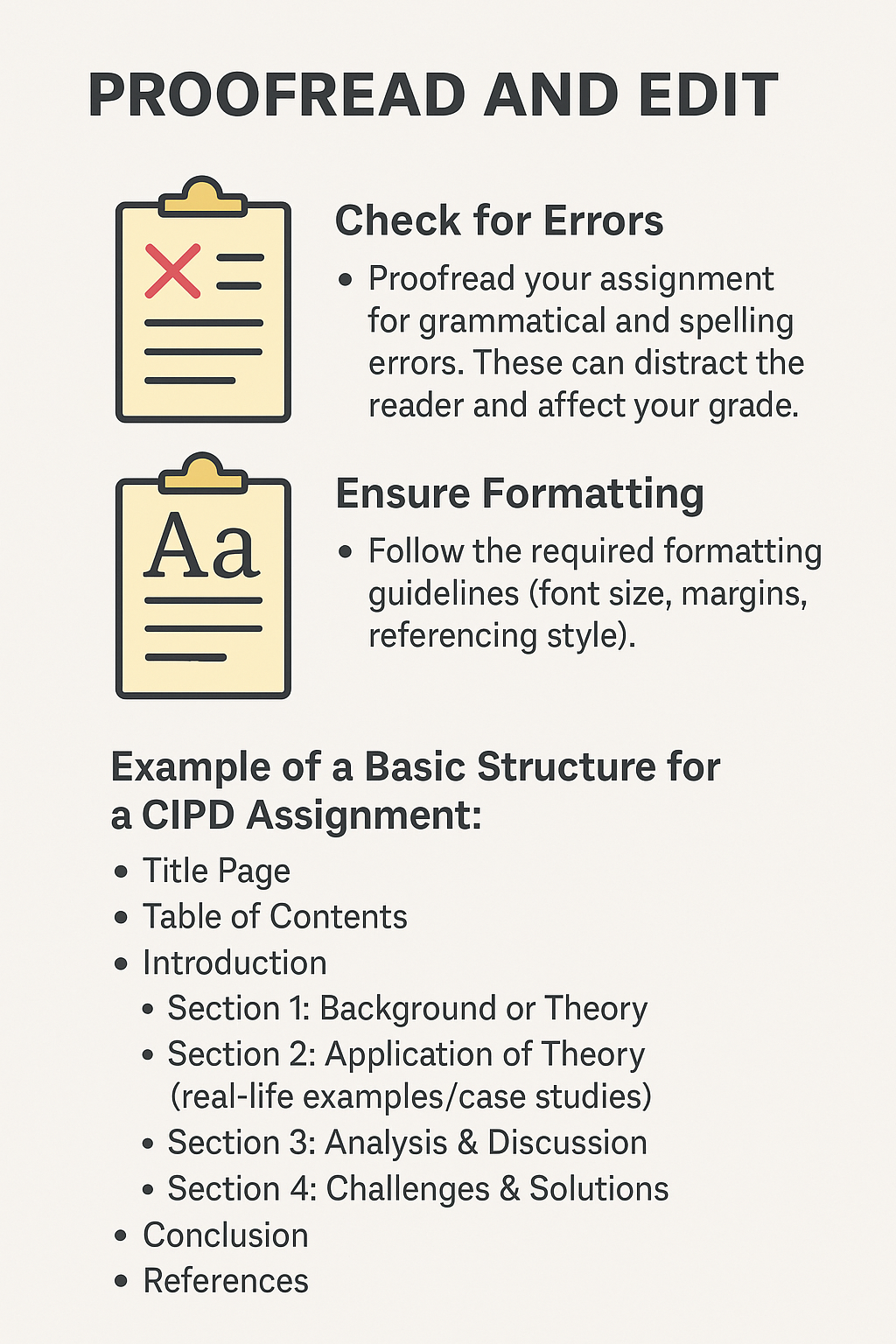
Check Errors:Proofread your assignment for grammatical and spelling errors. These can distract the reader and affect your grade.
Ensure Formatting:Follow the required formatting guidelines (font size, margins, referencing style).
Example of a Basic Structure for a CIPD Assignment:
Title Page
Add name course, date, and title of the assignment.
Table of Contents
If Assignment is so long you should add table of content so that Students get easily.
Introduction
Share a short intro and mention the areas to be discussed
Main Body
Section 1:Background or Theory
Section 2:Application of Theory (real-life examples/case studies)
Section 3:Analysis & Discussion
Section 4:Challenges and Recommendations
Conclusion
Highlight key points and recommendation
References
Cite all the sources you referred to in your assignment.
Final Tip:
Student Perspective: Write like you are explaining the topic to someone unfamiliar with it. Keep the tone clear, informative and engaging.